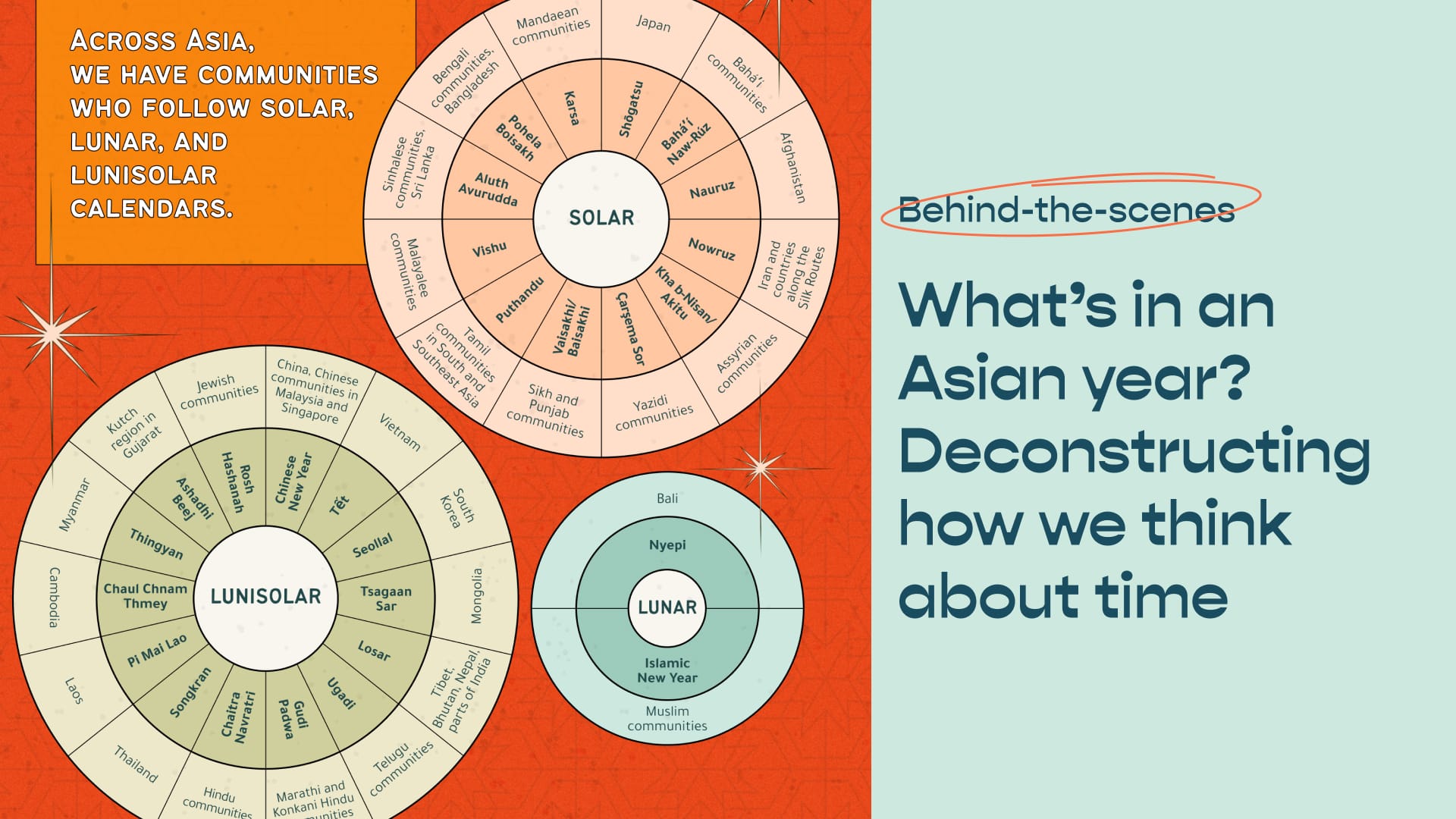
What’s in an Asian year? Deconstructing how we think about time
Working on a story about different Asian new years made our Editorial Lead Nabilah reconsider her ideas about time. In this article, she shares how her research made her question our reliance on the Gregorian calendar and what we can learn from the various Asian calendar systems
My starting point for this story was, frankly, one of ignorance. How do I write a story about Asian calendars? How many different calendars are even out there? I could only name a handful. Since I didn’t quite know how to start writing, I was glad when our multimedia designer Griselda, who was helping with research, suggested we collate the dates of the various Asian new years.
As a journalist who used to work in a fairly conventional newsroom, my comfort zone is to have a rough angle in mind before I begin writing my drafts. For this story, however, I had none. Collating the data before figuring out how to tell the story was thrilling and a little bit scary. While starting with data is something we often talk about in Kontinentalist and even teach in our workshops, I hadn’t really done it before, especially since I don’t write stories for Kontinentalist that often. This time around, I had to have faith that the narrative would come to me once I started looking at the data.
Griselda started us off by creating a big spreadsheet, where we input detailed information about each new year, their related traditions and values, as well as the names of calendars they were tied to. Because there was so much to cover, we divided the research work among us by using a list we found on Wikipedia (shown below) to figure out how to split the work.


